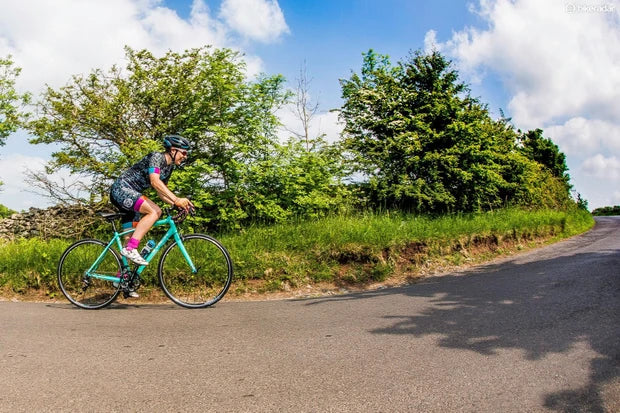These cycling tips, covering kit, clothing, nutrition, technique and more are aimed at beginners, the new riders who’ve just started out on their great two-wheeled adventure. Think of BikeRadar as your riding buddy, who wants to help you get the most out of you and your bike!
Below, we’ve tried to cover the common pitfalls of getting into riding, but not forgotten that the best thing about cycling is that it’s fun.
Whether you’re a road cyclist, mountain biker or city commuter, there’s bound to be something here for you (spoiler alert: the most important one is at the bottom).
In the words of the great Eddy Merckx – the legendary Belgian ex-pro cyclist who won 11 Grand Tours, including five Tour de France victories: “Ride as much or as little, as long or as short, as you feel. But ride.”
Best cycling clothing for beginners

Right, let’s start with what to wear. There’s a huge range of cycling clothing out there, in a dazzling variety of colours and fabrics, from the easily affordable to the insanely expensive. Let’s measure you up…
1. Padded cycling shorts
The best cycling shorts stop your backside hurting so much. If you’re asking yourself: should I wear underwear under padded cycling shorts? the answer’s no. Massively padded perches won’t help you on longer rides, trust us on this. The only way to be comfortable in the saddle is to wear padded shorts, choose the best bike saddle, set the saddle height on your bike right and ride until you get used to your saddle.
2. Wear a cycling helmet
We know legislating helmets is massively contentious, but the best road bike helmets and best mountain bike helmets might save your life. It’s not hard nowadays to find one that’s comfy, light and affordable. And no, you don’t have to buy the most expensive model because they all conform to current safety standards.
3. Clipless pedals
Deciding between flat or clipless pedals can be tricky. Clipless pedals are confusingly the ones you clip into using cleats, and they are without a doubt the best road bike pedals. The binding can be made loose enough to come away easily, you’ll quickly learn how to use clipless pedals and they’ll make a massive difference to your pedalling efficiency.
4. Mountain bikers, wear protection
Mountain bikers, particularly when you’re starting out or learning new skills, will be very grateful for a decent pair of gloves and knee pads, at minimum. What to wear mountain biking depends on how technical your riding is. If you’re learning big jumps or hardcore downhill trails, consider armour and pads for your elbows, and even back protectors too.
5. Get some cycling sunglasses
The best cycling sunglasses don’t need to cost the earth or make you look stupid, but they will keep your eyes protected from bugs, stones, sun and rain. Some versions feature interchangeable lenses, so, if you can, get one lens for bright conditions and one for dull, wet days.
Bike maintenance made easy
Now that you’re wearing something comfortable, let’s move on to keeping your bike happy. You don’t need a shed full of tools to achieve this, but it helps to have a friendly bike shop nearby in case you need advice.
6. Use chain lube
Keep your chain clean and lubricated, particularly if riding in bad weather. As our guide to how to clean a bike chain explains, you’ll eliminate the dreaded ‘creak’ that cyclists hate, and more expensive parts such as chainrings won’t wear out as quickly.
7. Check your tyre pressure
Recommended tyre pressures will be indicated on the sidewall of your tyres, but the ideal road bike tyre pressure is subject to a number of factors. The best bike pumps are a good investment because they require less effort to get to the recommended pressure, and will feature a handy pressure gauge.
8. Fit mudguards/fenders for wet conditions
Fitting mudguards is an integral part of how to get your road bike winter ready. Your back will thank you, your washing machine will thank you, anyone riding behind you will be thank you too. Some (including some BikeRadar staffers) will point out they can ruin the clean lines of a fancy road bike but, in the mire of winter, do you really care?
9. Keep your bike clean
Although few of us are as fastidious as we should be, you can clean your bike in seven simple steps. Hot soapy water and a sponge will do the job for most parts unless the grime is caked on, in which case there are some great cleaning sprays available. Use specialist degreaser for the drivetrain (cassette, chain, crankset and so on). Then spray your gleaming bike all over with a silicone aerosol – avoid braking surfaces – this will stop mud sticking on your next ride.
10. Puncture repair
Learn how to fix a puncture, and always carry a repair kit (including tyre levers, patches or a new inner tube, and pump). When you’re miles from home and suddenly hear that hissing sound, you’ll be glad you learned how to fix it yourself.

